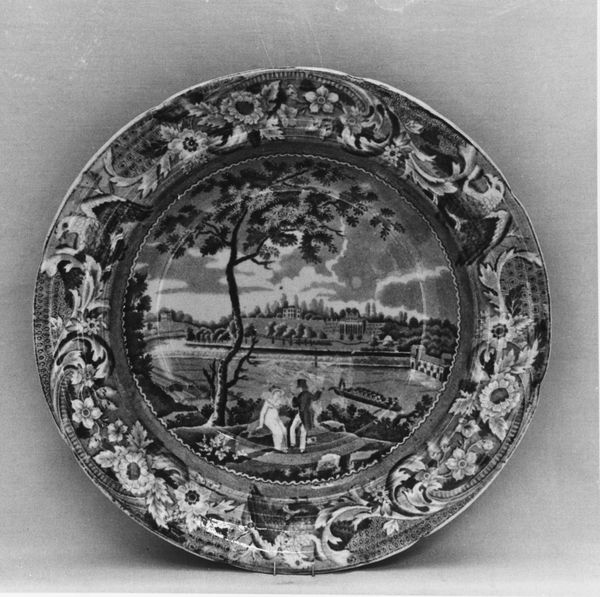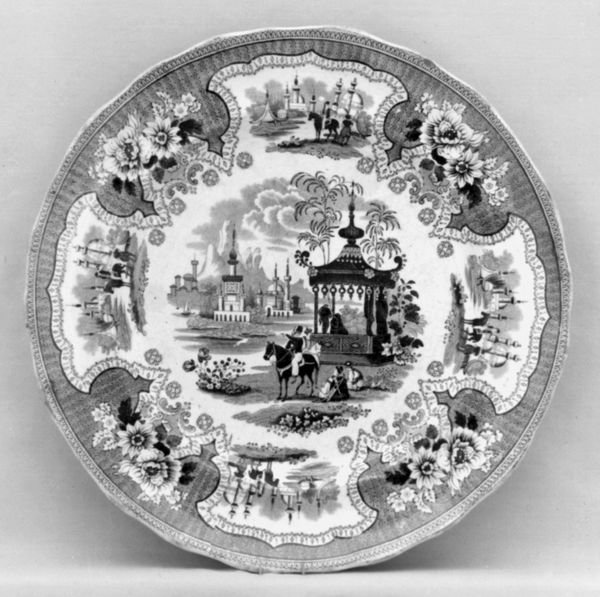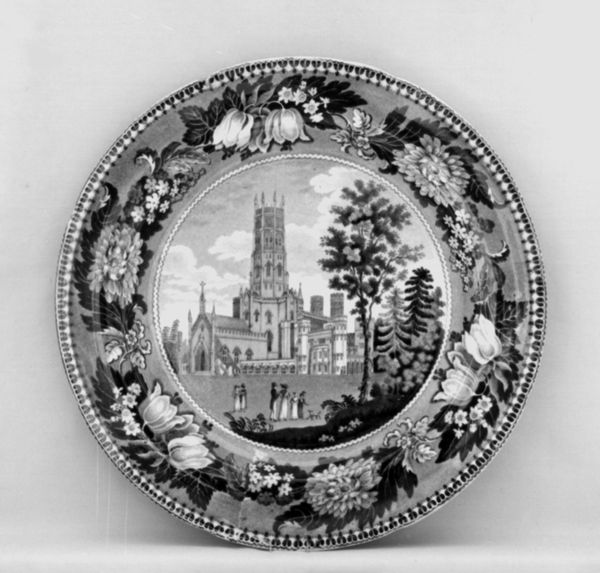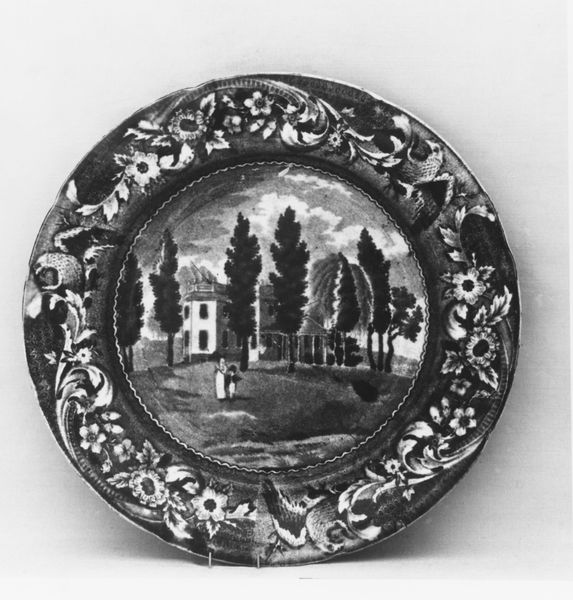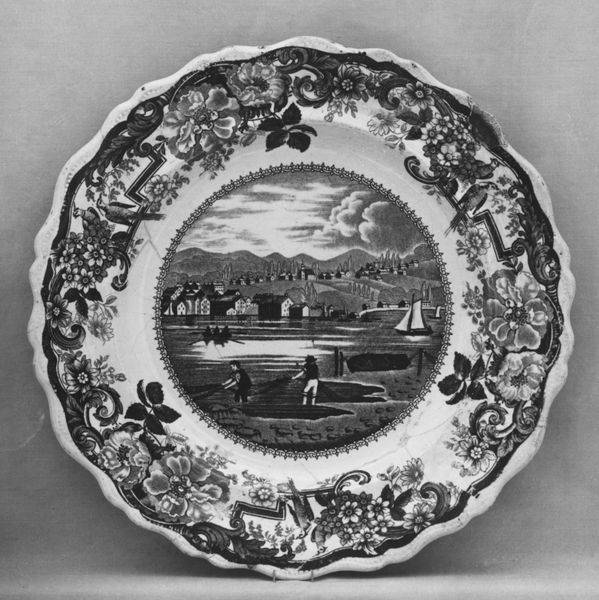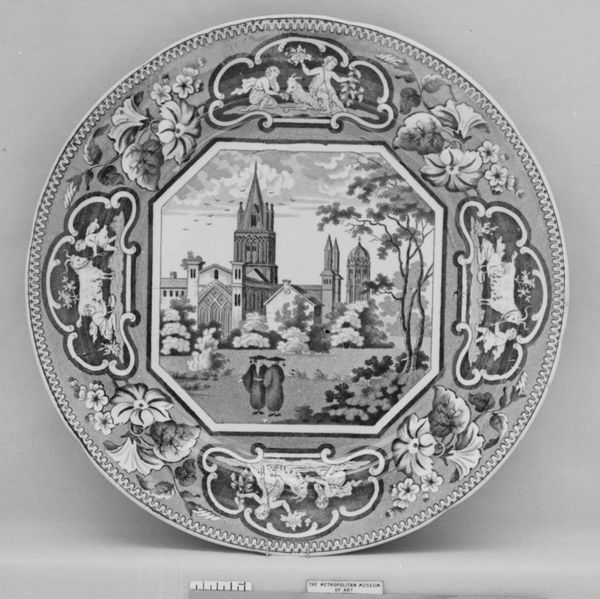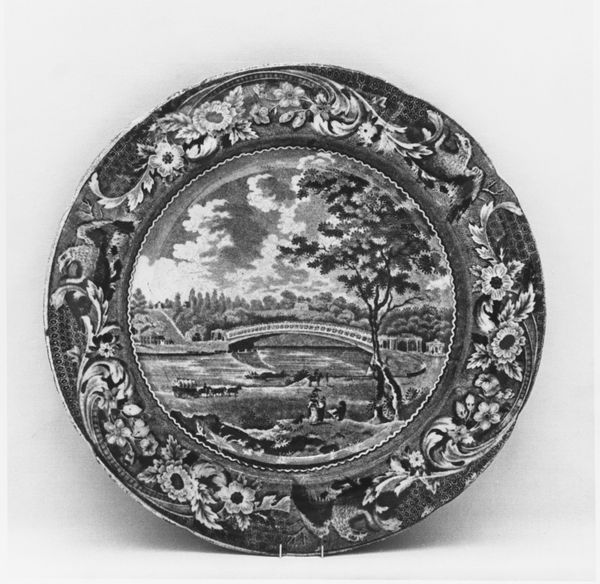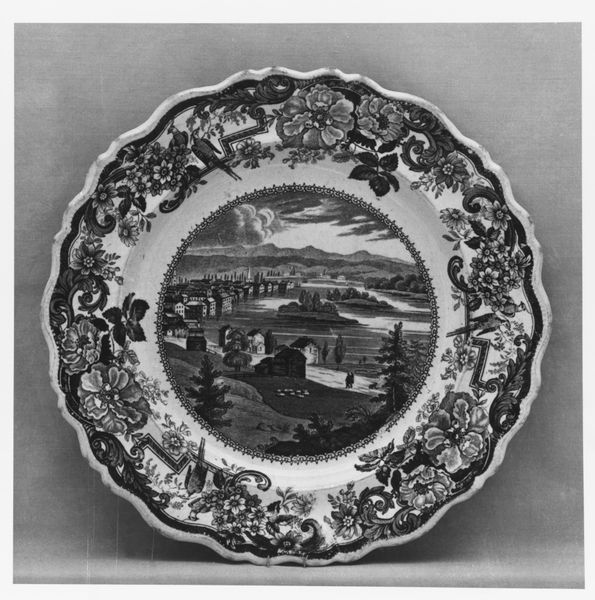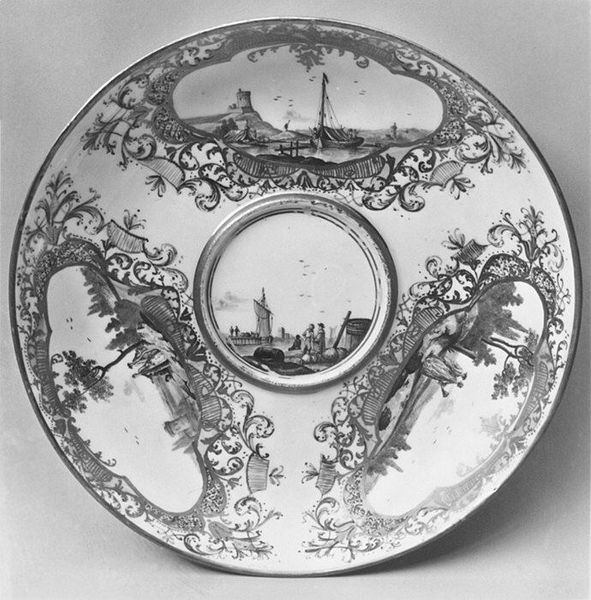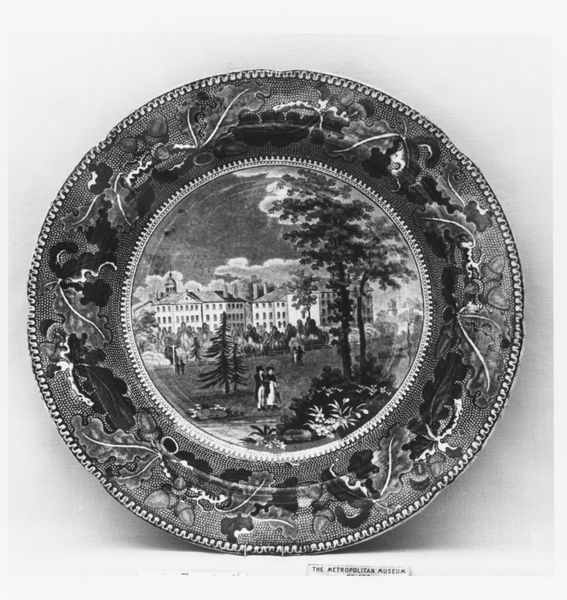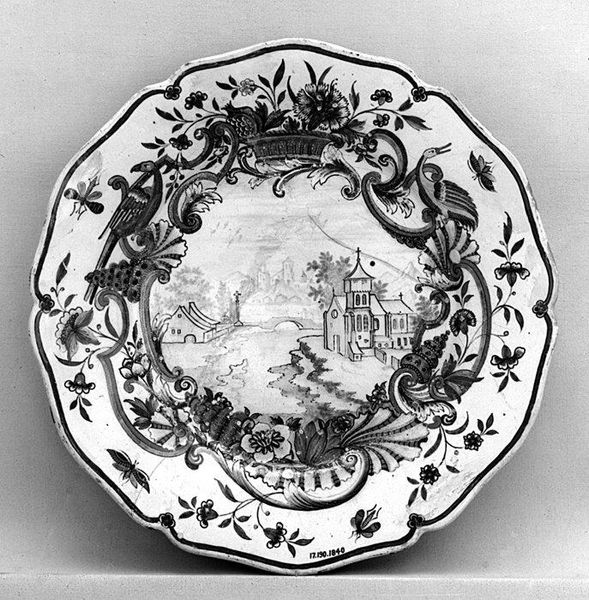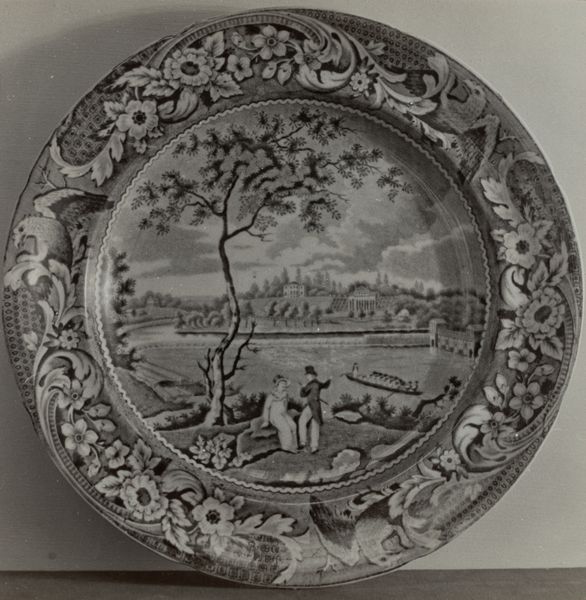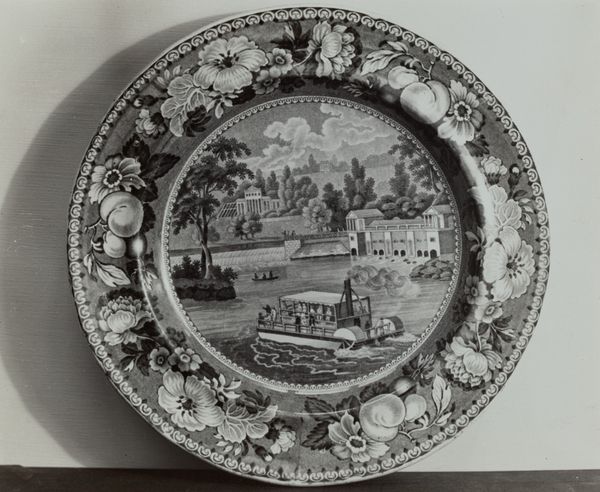
print, ceramic
#
neoclassicism
#
ship
# print
#
landscape
#
ceramic
#
flower
#
black and white theme
#
england
#
black and white
#
history-painting
Dimensions: Diam. 10 in. (25.4 cm)
Copyright: Public Domain
Editor: This ceramic plate, created between 1821 and 1834 by James and Ralph Clews, commemorates "The Landing of Gen. Lafayette." It's a black and white transfer print, with a neoclassical aesthetic, depicting ships arriving at what I presume is Castle Garden in New York. The flowered borders add a nice touch. What strikes you most about this object? Curator: I am interested in the plate as a commodity, specifically in terms of the Clews brothers capitalizing on the widespread admiration for Lafayette and his American tour. Transferware like this democratized art; it allowed everyday consumers to own a piece of historical narrative. Consider the labor involved: the mining of the clay, the artisans crafting the plate and creating the print, and the social structure allowing its mass production and distribution. Editor: That's a great point about accessibility. It reframes the artwork from a purely aesthetic object to a product of social and economic forces. Do you think the imagery itself - the ships, the port, the flowers - reflects that underlying industrial aspect in any way? Curator: Certainly. The idyllic portrayal, bordering on propaganda, glosses over the industrial reality of its creation and consumption. The floral border almost attempts to prettify the narrative, softening the edges of industrial production and reinforcing an image of refined gentility aimed at a specific consumer market. Even the choice of Lafayette as a subject speaks to an aspirational class embracing Revolutionary ideals alongside their tea. What purpose does this ceramic medium serve in delivering the plate's theme of history? Editor: I see what you mean. By placing this grand historical event onto an everyday object like a plate, meant for eating, perhaps it brings that historical moment into people's daily lives in a more tangible way. It transforms history into something consumable, both literally and figuratively. I never thought about considering who would actually use such a piece. Curator: Precisely! And considering it tells us far more about the object and society that produced it. Thank you.
Comments
No comments
Be the first to comment and join the conversation on the ultimate creative platform.
